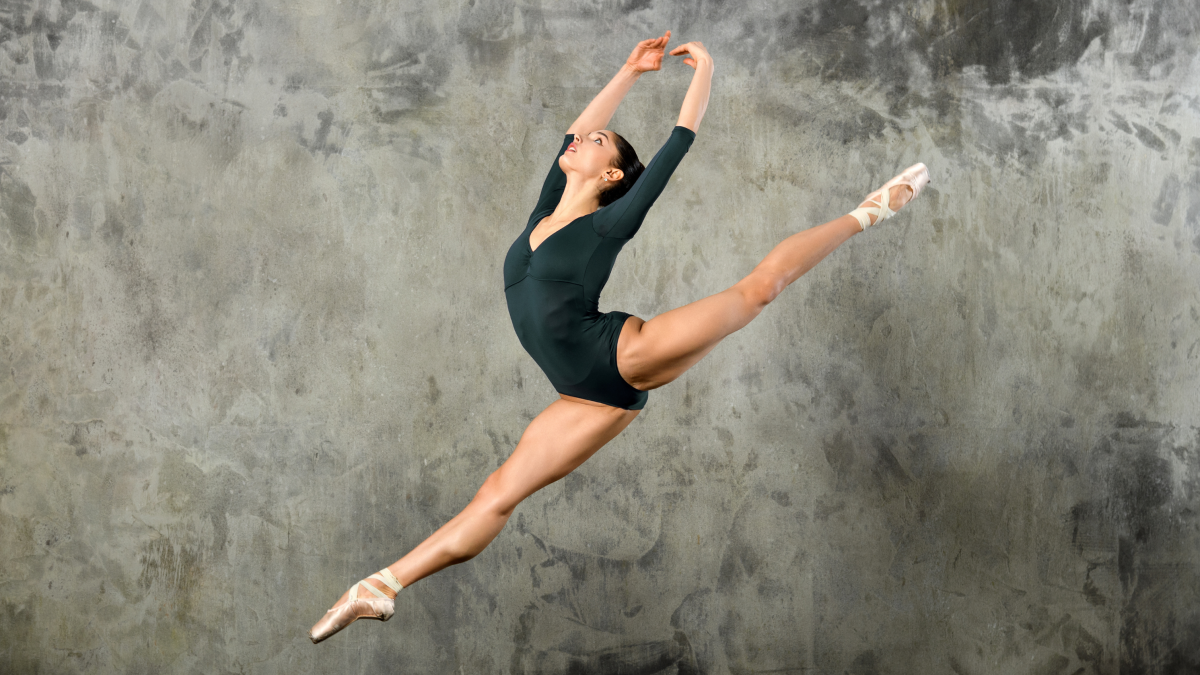The Flexibility Connection: Using Strength Training to Improve Flexibility in Dancers

For many dancers, improving flexibility is often a prioritized goal. The ability to execute high kicks, long developpé lines, and fluid movements depends largely on a dancer’s flexibility. Traditionally, dancers might focus primarily on stretching routines to enhance their flexibility, but an often overlooked and highly beneficial approach is incorporating strength training into their regimen. Strength training can significantly improve flexibility, leading to better performance, reduced risk of injury, and a more balanced body.
The Misconception: Strength vs. Flexibility
A common misconception is that strength training can make muscles tight and reduce flexibility. This belief stems from the idea that strength training creates bulky muscles which then impedes the range of motion. However, this is far from the truth. When done correctly, strength training enhances muscle function and can increase flexibility. The key lies in understanding how to approach strength training so that a dancer can improve strength and flexibility.
How Strength Training Enhances Flexibility
1. Improves Muscle Function and Balance: Strength training helps correct muscle imbalances. Many dancers develop imbalances due to repetitive movements and favoring certain muscles. Strengthening weaker muscles helps create a balanced musculature, which supports better overall flexibility.
2. Increases Range of Motion: By focusing on full range-of-motion exercises, strength training encourages muscles to stretch and contract fully. This not only builds strength but also trains the muscles to move efficiently through their complete range of motion, contributing to enhanced flexibility. One study looked at the differences between doing a 5 week resistance training program and a 5 week static stretching program. There were no differences between the two groups’ flexibility. The resistance training group had also improved in their overall strength too.
3. Enhances Joint Stability: Strong muscles support and stabilize the joints through their full range of motion. When a joint is surrounded by weak muscles that cannot provide the needed stability, the muscles will clench down to guard the joint. This then leads to the muscles and joints feeling very tight. This stability allows for greater flexibility without compromising the integrity of the joints, which is crucial for preventing injuries in dancers.
4. Improves Muscle Elasticity: Regular strength training promotes muscle elasticity, meaning a muscle’s ability to return to its normal length after being contracted or lengthened. Well-conditioned muscles are more pliable and can stretch further, thus improving flexibility. This elasticity also helps muscles recover better from the strain of dancing.
5. Promotes Functional Flexibility: Functional flexibility is the range of motion able to be accessed during movements. Strength training improves functional flexibility by conditioning the muscles to perform optimally during dynamic movements. A dancer might be able to do a full split on the floor, but then have trouble using the flexibility when doing a leap in the air. In this case, the dancer doesn’t have the strength to use her full flexibility if she doesn’t have the floor and gravity helping.
Strength Exercises to Get Started With Improving Flexibility
1. Deep Squat: This is a great movement that challenges the entire lower body and can help improve range of motion of the ankles, knees, hips. If your squat depth is limited by stiff ankles, then start with the heels raised up on a book about an inch tall. This will allow your hips to get lower without having to tip your upper body more forward. Here is an example of the positioning. You can either actively hold this position, or make it a movement. Adding weight is an easy way to progress this.
2. Romanian Deadlift (RDL): This is a great exercise for lengthening your hamstrings. It can be done while standing on two legs or on one leg. Here is an example of a single leg RDL. In order to focus on more hamstring length with this exercise, try to keep the standing knee straight, but not locked.
3. Good Mornings, Seated in Chair or in a Straddle: This is not only a great exercise for strengthening the muscles along the spine, but also for improving flexibility in the hip joints. Here is an example of the straddle pancake good mornings with modifications.
One last note about strength training for flexibility: based on some research studies, even doing just one set of 8-12 reps was enough to start seeing changes in flexibility when done consistently. Typically doing this kind of training at least 2x/week of the course of 5 weeks is the minimum amount needed to see results.
Strength training is a powerful tool for dancers aiming to enhance their flexibility and overall performance. Embrace the synergy of strength and flexibility, and watch your dance skills soar to new heights.
References:
Leite, T., de Souza Teixeira, A., Saavedra, F., Leite, R. D., Rhea, M. R., & Simão, R. (2015). Influence of Strength and Flexibility Training, Combined or Isolated, on Strength and Flexibility Gains. Journal of Strength and Conditioning Research, 29(4), 1083–1088.
Leite, T., Júnior, R., and Reis, V., 2011. Influence of the Number of Sets at a Strength Training in the Flexibility Gains. Journal of Human Kinetics, 29A(Special-Issue).
Morton, S., Whitehead, J., Brinkert, R. and Caine, D., 2011. Resistance Training vs. Static Stretching: Effects on Flexibility and Strength. Journal of Strength and Conditioning Research, 25(12), pp.3391-3398.
Ribeiro, A., Carneiro, N., Nascimento, M., Gobbo, L., Schoenfeld, B., Achour Júnior, A., Gobbi, S., Oliveira, A. and Cyrino, E., 2015. Effects of different resistance training frequencies on flexibility in older women. Clinical Interventions in Aging, p.531.
I have read and agree to the terms & conditions. We will not spam you.
 Dr. Chelsea Moehlenbrock
Dr. Chelsea Moehlenbrock 